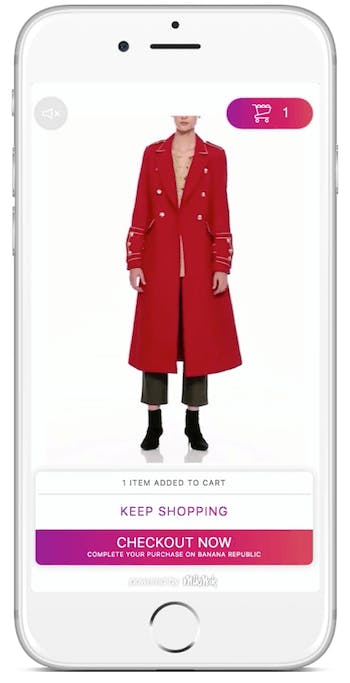“Shoppable social” – the trend that sees consumers make direct purchases through social platforms – is helping establish a causal link between user engagement and a brand’s success; effectively converting social media into its very own revenue stream.
It makes sense. Why not give consumers the option to buy the products they see – and love – while engaging with brands on social media?
MikMak is one platform that allows advertisers on the likes of Snapchat and Instagram to run video ads that direct users to swipe up to see more content, with a link to add-to-cart on the retailer’s website.
Rachel Tipograph, MikMak’s founder and CEO, told AdWeek that “the No. 1 pain point that I heard, no matter how large or small the business, was the friction that they currently experience going from social media to check-out.”

Other platforms such as Shopify and Soldsie are also tackling this scaling issue by letting brands easily integrate their online shops with social channels, allowing customers to purchase directly from social media.
With the the ‘fourth industrial revolution’ bringing pronounced changes to the way we do business, it pays to be an early adopter of such technology. The retail sector, for example, was forced to adapt with the dawn of digital, meaning more and more people were choosing online shopping over the high street experience. Suffice to say no industry will avoid the effects of ongoing digital transformation, which promises to disrupt age-old business models in everything from insurance to healthcare and transport.
Further evidence in favour of using social media for purposes beyond brand recognition can be found in developing countries, where the growth of messaging services like WhatsApp has enabled small businesses to access greater numbers of customers than ever before.
According to WhatsApp, over 80% of small businesses in Brazil and India already use the platform to reach their customers, leading to the recent creation of standalone app, WhatsApp Business. Its mission: to “make it easier for companies to connect with customers, and more convenient for our 1.3 billion users to chat with businesses that matter to them.” While early adoption has been impressive, many users have said it lacks certain important features, such as receiving payments in-app – further making the business case for shoppable social.
With clear advantages for both customers and brands, not only does social ecommerce make shopping easier for customers, it also allows the effectiveness of campaign conversions to be reviewed in real time. Philips in Czech Republic created the Facebook chatbot FOUSBOT, driving awareness, advocacy and ultimately conversions of One Blade. The campaign strategy included “razor-sharp” targeting and numerous creatives.
Another example of how at Philips we are moving towards the shoppable social model can be seen in a new agreement recently finalised with LinkedIn, which allows us to connect a new LinkedIn program via our website – driving the ability to convert and sell. The Global Digital Group will also be activating a number of social selling pilots throughout 2018.
In the current model of social media marketing, content is at the centre of the experience. In the future, content will of course still be important – but it’s the customer who will be at the centre of the experience. Data will allow us to create personalised, timely, location-based experiences. Utilised with new channels, this will help shorten the path to purchase, thereby enhancing the experience of our customers.
To help maximise this opportunity brands must understand the value of visual ecommerce on social platforms. As traditional methods of formal advertising begin to lose their effectiveness, 77% of consumers today say that they are more influenced by authentic customer-focused photos, rather than professional campaigns, when making purchasing decisions. By leveraging user generated content, we can now move towards truly customer-first methods as we move towards shoppable social.
Shoppable social is set to expand over the coming years as brands continue to invest in creating multi-channel social storefronts. Like the digital revolution before it, shoppable social has the potential to connect brands with consumers in unprecedented ways. Those at the forefront of this will enjoy the biggest gains.
Further resources:

Comments